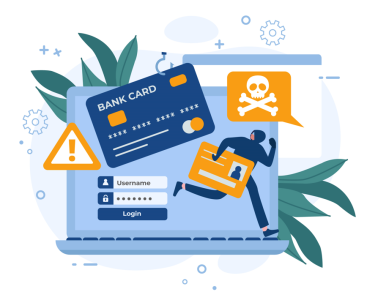Report reveals almost two million Aussies hit by card fraud
In today's digital age, the convenience of card transactions is undeniable.
Unfortunately, with this ease comes a growing threat that has impacted nearly 2 million Australians over the age of 15: card fraud.
The latest figures from the Australian Bureau of Statistics (ABS) are a stark reminder that no one is immune to this type of scam.
The percentage of Australians who experienced card fraud increased to 8.7 per cent in the 2022-2023 period, up from 8.1 per cent the previous year, according to the agency's report.
The ABS Head of Crime and Justice Statistics, William Milne, highlighted the severity of the issue.

He noted that, on average, $200 was withdrawn or spent in each of the estimated 1.8 million card fraud incidents.
For one in six victims, the losses were even more substantial, exceeding $1,000.
Card fraud can take many forms—from the unauthorised use of credit, debit, or EFTPOS card details to make purchases or withdraw funds to more sophisticated scams involving online shopping or false billing.
The latter accounted for nearly 200,000 Australian victims, with online shopping scams often involving fake invoices or purchases of non-existent goods.
Nearly all victims of card fraud notified authorities upon discovery, and 92 per cent were contacted by their bank or financial institution to report the incident.
This high rate of reporting is crucial in the fight against fraud, as it helps financial institutions and law enforcement agencies track and prevent further fraudulent activities.
To help you protect your wallet and join the ranks of vigilant consumers, here are some tips to avoid card fraud:
1. Monitor Your Accounts Regularly: Check your bank and credit card statements frequently to spot unauthorised transactions as early as possible.
2. Use Secure Payment Methods: When shopping online, ensure the website is secure (look for 'https' in the URL and a padlock symbol) and consider using payment services like PayPal that offer additional layers of protection.
3. Be Skeptical of Unsolicited Contacts: If you receive an unexpected email or phone call asking for your card details or personal information, do not provide it. If a message contains a link, do not click it. Instead, contact your bank directly using the number on the back of your card.
4. Keep Your Personal Information Private: Never share your PIN or online banking passwords, and be cautious about the personal information you share on social media.
5. Update Your Devices: Ensure your computer, smartphone, and other devices have the latest security updates and antivirus software installed.
6. Shred Sensitive Documents: Before throwing away any documents that contain personal or financial information, shred them to prevent dumpster divers from getting their hands on your details.
7. Report Lost or Stolen Cards Immediately: If your card is lost or stolen, contact your bank right away to cancel it and prevent fraudulent transactions.
8. Educate Yourself on Scams: Stay informed about the latest scam tactics by visiting websites like Scamwatch, which is run by the Australian Competition and Consumer Commission (ACCC).
We have several stories in our Scam Watch forum that feature how fraudsters target their victims:
Remember, anyone can fall victim to card fraud. Scammers are constantly refining their techniques to exploit even the most cautious individuals.
However, by taking proactive steps and remaining vigilant, you can significantly reduce your risk of becoming their next victim.
 Have you or someone you know been affected by card fraud? What measures have you taken to protect yourself? Share your experiences and tips in the comments below.
Have you or someone you know been affected by card fraud? What measures have you taken to protect yourself? Share your experiences and tips in the comments below.
Unfortunately, with this ease comes a growing threat that has impacted nearly 2 million Australians over the age of 15: card fraud.
The latest figures from the Australian Bureau of Statistics (ABS) are a stark reminder that no one is immune to this type of scam.
The percentage of Australians who experienced card fraud increased to 8.7 per cent in the 2022-2023 period, up from 8.1 per cent the previous year, according to the agency's report.
The ABS Head of Crime and Justice Statistics, William Milne, highlighted the severity of the issue.

ABS revealed that almost two million Australians experienced card fraud in 2022-2023. Image source: Freepik
He noted that, on average, $200 was withdrawn or spent in each of the estimated 1.8 million card fraud incidents.
For one in six victims, the losses were even more substantial, exceeding $1,000.
Card fraud can take many forms—from the unauthorised use of credit, debit, or EFTPOS card details to make purchases or withdraw funds to more sophisticated scams involving online shopping or false billing.
The latter accounted for nearly 200,000 Australian victims, with online shopping scams often involving fake invoices or purchases of non-existent goods.
Nearly all victims of card fraud notified authorities upon discovery, and 92 per cent were contacted by their bank or financial institution to report the incident.
This high rate of reporting is crucial in the fight against fraud, as it helps financial institutions and law enforcement agencies track and prevent further fraudulent activities.
To help you protect your wallet and join the ranks of vigilant consumers, here are some tips to avoid card fraud:
1. Monitor Your Accounts Regularly: Check your bank and credit card statements frequently to spot unauthorised transactions as early as possible.
2. Use Secure Payment Methods: When shopping online, ensure the website is secure (look for 'https' in the URL and a padlock symbol) and consider using payment services like PayPal that offer additional layers of protection.
3. Be Skeptical of Unsolicited Contacts: If you receive an unexpected email or phone call asking for your card details or personal information, do not provide it. If a message contains a link, do not click it. Instead, contact your bank directly using the number on the back of your card.
4. Keep Your Personal Information Private: Never share your PIN or online banking passwords, and be cautious about the personal information you share on social media.
5. Update Your Devices: Ensure your computer, smartphone, and other devices have the latest security updates and antivirus software installed.
6. Shred Sensitive Documents: Before throwing away any documents that contain personal or financial information, shred them to prevent dumpster divers from getting their hands on your details.
7. Report Lost or Stolen Cards Immediately: If your card is lost or stolen, contact your bank right away to cancel it and prevent fraudulent transactions.
8. Educate Yourself on Scams: Stay informed about the latest scam tactics by visiting websites like Scamwatch, which is run by the Australian Competition and Consumer Commission (ACCC).
We have several stories in our Scam Watch forum that feature how fraudsters target their victims:
- Father instantly loses $150,000 life savings: ‘I feel sick just thinking about it’
- ACCC report reveals uptick in social media scams preying on seniors
- Selling online? Here’s how to avoid losing money to ruthless scammers on Facebook Marketplace
- Scammer swindles $18,000 from war veteran: 'It was extremely convincing'
Remember, anyone can fall victim to card fraud. Scammers are constantly refining their techniques to exploit even the most cautious individuals.
However, by taking proactive steps and remaining vigilant, you can significantly reduce your risk of becoming their next victim.
Key Takeaways
- Nearly two million Australians over 15 experienced card fraud in the 2022-2023 period.
- On average, $200 was taken or spent in each incident of card fraud, with 8.7 per cent of people experiencing such fraud.
- The ABS has noted an increase in card fraud incidents from the previous year.
- While nearly all victims notified authorities, nearly 200,000 Australians fell victim to online shopping or false billing scams.







